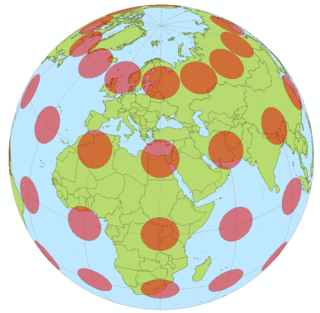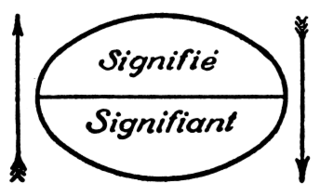 W
WA dichotomy is a partition of a whole into two parts (subsets). In other words, this couple of parts must bejointly exhaustive: everything must belong to one part or the other, and mutually exclusive: nothing can belong simultaneously to both parts.
 W
WThe contrast of white and black has a long tradition of metaphorical usage, traceable to the Ancient Near East, and explicitly in the Pythagorean Table of Opposites. In Western culture as well as in Confucianism, the contrast symbolizes the moral dichotomy of good and evil.
 W
WChange and continuity is a classic dichotomy within the fields of history, historical sociology, and the social sciences more broadly. The dichotomy is used to discuss and evaluate the extent to which a historical development or event represents a decisive historical change or whether a situation remains largely unchanged. The question of change and continuity is considered a classic discussion in the study of historical developments. A good example of this discussion is the question of how much the Peace of Westphalia in 1648 represents an important change in European history. In a similar vein, historian Richard Kirkendall questioned whether FDR's New Deal represented "a radical innovation or a continuation of earlier themes in American life?" and posed the question of whether "historical interpretations of the New Deal [should] stress change or emphasize continuity?"
 W
WIn sociology, the East–West dichotomy is the perceived difference between the Eastern and the Western worlds. Cultural and religious rather than geographical in division, the boundaries of East and West are not fixed, but vary according to the criteria adopted by individuals using the term.
 W
WExclusive or or exclusive disjunction is a logical operation that outputs true only when inputs differ.
 W
WThe fight-or-flight response is a physiological reaction that occurs in response to a perceived harmful event, attack, or threat to survival. It was first described by Walter Bradford Cannon. His theory states that animals react to threats with a general discharge of the sympathetic nervous system, preparing the animal for fighting or fleeing. More specifically, the adrenal medulla produces a hormonal cascade that results in the secretion of catecholamines, especially norepinephrine and epinephrine. The hormones estrogen, testosterone, and cortisol, as well as the neurotransmitters dopamine and serotonin, also affect how organisms react to stress. The hormone osteocalcin might also play a part.
 W
WFigure–ground organization is a type of perceptual grouping that is a vital necessity for recognizing objects through vision. In Gestalt psychology it is known as identifying a figure from the background. For example, black words on a printed paper are seen as the "figure," and the white sheet as the "background".
 W
WGender polarization is a concept in sociology by American psychologist Sandra Bem which states that societies tend to define femininity and masculinity as polar opposite genders, such that male-acceptable behaviors and attitudes are not seen as appropriate for women, and vice versa. The theory is an extension of the sex and gender distinction in sociology in which sex refers to the biological differences between men and women, while gender refers to the cultural differences between them, such that gender describes the "socially constructed roles, behaviours, activities, and attributes that a given society considers appropriate for men and women". According to Bem, gender polarization begins when natural sex differences are exaggerated in culture; for example, women have less hair than men, and men have more muscles than women, but these physical differences are exaggerated culturally when women remove hair from their faces and legs and armpits, and when men engage in body building exercises to emphasize their muscle mass. She explained that gender polarization goes further, when cultures construct "differences from scratch to make the sexes even more different from one another than they would otherwise be", perhaps by dictating specific hair styles for men and women, which are noticeably distinct, or separate clothing styles for men and women. When genders become polarized, according to the theory, there is no overlap, no shared behaviors or attitudes between men and women; rather, they are distinctly opposite. She argued that these distinctions become so "all-encompassing" that they "pervade virtually every aspect of human existence", not just hairstyles and clothing but how men and women express emotion and experience sexual desire. She argued that male-female differences are "superimposed on so many aspects of the social world that a cultural connection is thereby forged between sex and virtually every other aspect of human experience".
 W
WIn religion, ethics, philosophy, and psychology "good and evil" is a very common dichotomy. In cultures with Manichaean and Abrahamic religious influence, evil is usually perceived as the dualistic antagonistic opposite of good, in which good should prevail and evil should be defeated. In cultures with Buddhist spiritual influence, both good and evil are perceived as part of an antagonistic duality that itself must be overcome through achieving Śūnyatā meaning emptiness in the sense of recognition of good and evil being two opposing principles but not a reality, emptying the duality of them, and achieving a oneness. A monism of goodness would guarantee prosperity since only good can exist, whereas a monism of evil would lead to our extinction.
 W
WIn political science and popular discourse, the horseshoe theory asserts that the far-left and the far-right, rather than being at opposite and opposing ends of a linear political continuum, closely resemble one another, analogous to the way that the opposite ends of a horseshoe are close together. The theory is attributed to French philosopher and writer Jean-Pierre Faye. Proponents of the theory point to a number of similarities between the far-left and the far-right, including their supposed propensity to gravitate to authoritarianism or totalitarianism. However, the horseshoe theory has also received criticism.
 W
WIn sociology and social psychology, an in-group is a social group to which a person psychologically identifies as being a member. By contrast, an out-group is a social group with which an individual does not identify. People may for example identify with their peer group, family, community, sports team, political party, gender, religion, or nation. It has been found that the psychological membership of social groups and categories is associated with a wide variety of phenomena.
 W
WThe is–ought problem, as articulated by the Scottish philosopher and historian David Hume, arises when a writer makes claims about what ought to be that are based solely on statements about what is. Hume found that there seems to be a significant difference between positive statements and prescriptive or normative statements, and that it is not obvious how one can coherently move from descriptive statements to prescriptive ones. Hume's law or Hume's guillotine is the thesis that, if a reasoner only has access to non-moral and non-evaluative factual premises, the reasoner cannot logically infer the truth of moral statements.
 W
WIn Western esotericism the Left-Hand Path and Right-Hand Path are the dichotomy between two opposing approaches to magic. This terminology is used in various groups involved in the occult and ceremonial magic. In some definitions, the Left-Hand Path is equated with malicious black magic or black shamanism, while the Right-Hand Path with benevolent white magic. Other occultists have criticised this definition, believing that the Left–Right dichotomy refers merely to different kinds of working and does not necessarily connote good or bad magical actions.
 W
WIn psychoanalytic literature, a Madonna–whore complex is the inability to maintain sexual arousal within a committed, loving relationship. First identified by Sigmund Freud, under the rubric of psychic impotence, this psychological complex is said to develop in men who see women as either saintly Madonnas or debased prostitutes. Men with this complex desire a sexual partner who has been degraded while they cannot desire the respected partner. Freud wrote: "Where such men love they have no desire and where they desire they cannot love." Clinical psychologist Uwe Hartmann, writing in 2009, stated that the complex "is still highly prevalent in today's patients".
 W
WManifest and latent functions are social scientific concepts created by anthropologist, Bronislaw Malinowski in 1922 while studying the Trobiand Islanders in the Western Pacific. It was later modified for sociology by Robert K. Merton. Merton appeared interested in sharpening the conceptual tools to be employed in a functional analysis.
 W
WThe map–territory relation describes the relationship between an object and a representation of that object, as in the relation between a geographical territory and a map of it. Polish-American scientist and philosopher Alfred Korzybski remarked that "the map is not the territory" and that "the word is not the thing", encapsulating his view that an abstraction derived from something, or a reaction to it, is not the thing itself. Korzybski held that many people do confuse maps with territories, that is, confuse models of reality with reality itself. The relationship has also been expressed in other terms, such as Alan Watts's "The menu is not the meal."
 W
WThe mind–body problem is a debate concerning the relationship between thought and consciousness in the human mind, and the brain as part of the physical body. It is distinct from the question of how mind and body function chemically and physiologically, as that question presupposes an interactionist account of mind–body relations. This question arises when mind and body are considered as distinct, based on the premise that the mind and the body are fundamentally different in nature.
 W
WIn Japan, senpai and kōhai represent an informal hierarchical interpersonal relationship found in organizations, associations, clubs, businesses, and schools. The concept has its roots in Confucian teaching, and has developed a distinguished Japanese style, ultimately becoming part of Japanese culture.
 W
WSignified and signifier is a concept, most commonly related to semiotics, that can be described as "the study of signs and symbols and their use or interpretation." Swiss linguist Ferdinand de Saussure, one of the two founders of semiotics, introduced these terms as the two main planes of a sign: signified pertains to the "plane of content," while signifier is the "plane of expression."
 W
WSimulacra and Simulation is a 1981 philosophical treatise by the sociologist Jean Baudrillard, in which the author seeks to examine the relationships between reality, symbols, and society, in particular the significations and symbolism of culture and media involved in constructing an understanding of shared existence.
 W
W"The Two Cultures" is the first part of an influential 1959 Rede Lecture by British scientist and novelist C. P. Snow which were published in book form as The Two Cultures and the Scientific Revolution the same year. Its thesis was that science and the humanities which represented "the intellectual life of the whole of western society" had become split into "two cultures" and that this division was a major handicap to both in solving the world's problems.
 W
W"What Is Life" is a song by English rock musician George Harrison from his 1970 triple album All Things Must Pass. In many countries, it was issued as the second single from the album, in February 1971, becoming a top-ten hit in the United States, Canada and elsewhere, and topping singles charts in Australia and Switzerland. In the United Kingdom, "What Is Life" appeared as the B-side to "My Sweet Lord", which was the best-selling single there of 1971. Harrison's backing musicians on the song include Eric Clapton and the entire Delaney & Bonnie and Friends band, with whom he had toured during the final months of the Beatles. Harrison co-produced the recording with Phil Spector, whose Wall of Sound production also employed a prominent string arrangement by John Barham and multiple acoustic rhythm guitars, played by Harrison's fellow Apple Records signings Badfinger.
 W
WIn Ancient Chinese philosophy, yin and yang is a concept of dualism, describing how seemingly opposite or contrary forces may actually be complementary, interconnected, and interdependent in the natural world, and how they may give rise to each other as they interrelate to one another. In Chinese cosmology, the universe creates itself out of a primary chaos of material energy, organized into the cycles of Yin and Yang and formed into objects and lives. Yin is the receptive and Yang the active principle, seen in all forms of change and difference such as the annual cycle, the landscape, sexual coupling, the formation of both women and men as characters and sociopolitical history.